Shaking the Crown Bone Item Number: Nb7.346 a-b from the MOA: University of British Columbia
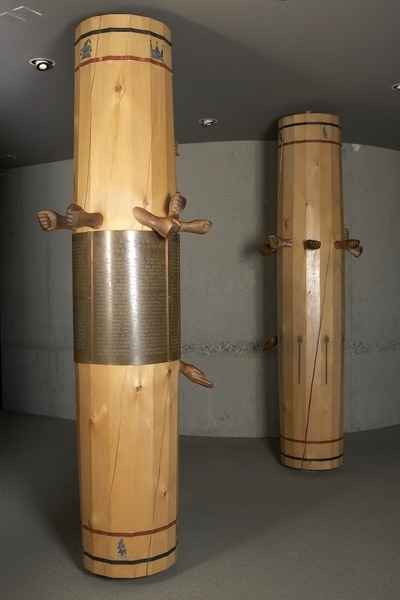

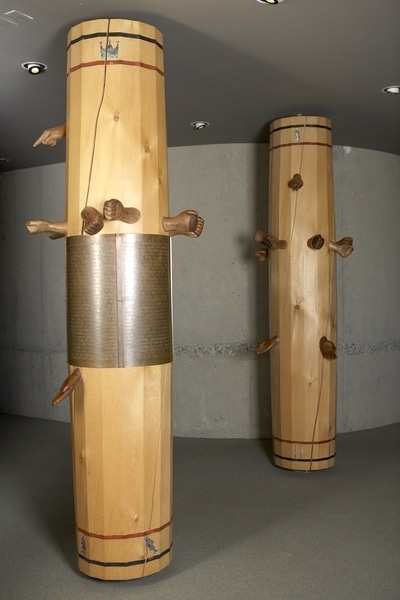
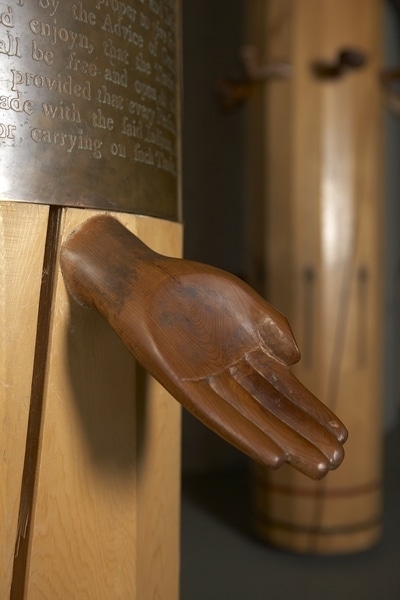
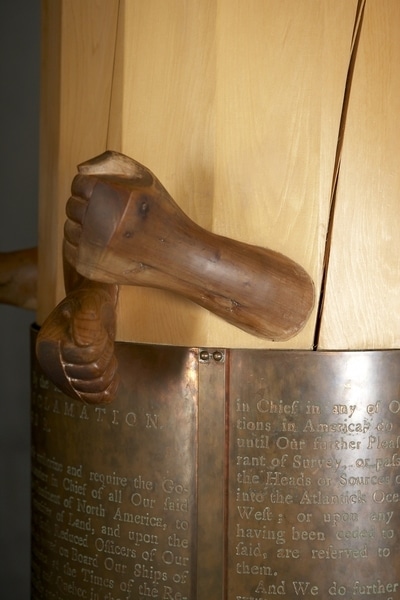
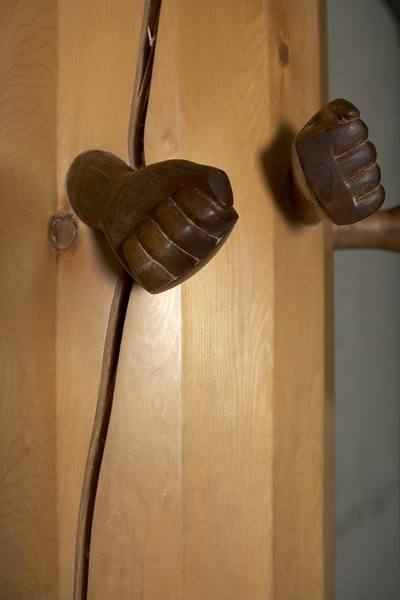

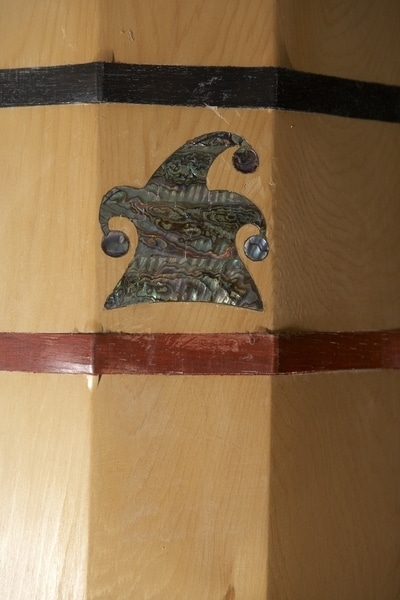
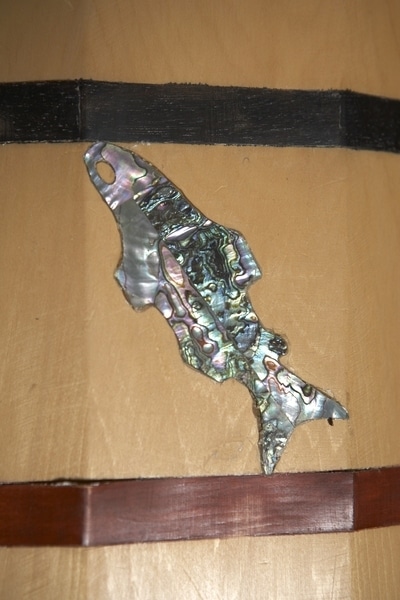
Description
Sculptural installation in the form of two very large lahal sticks. Each is installed vertically, and rotates on a central axis. The 'male' stick (part a) has a wide copper band around its centre, with the Royal Proclamation of 1763 acid-etched into it. The 'female' stick (part b) has 5 copper inlay hands, each with a year acid-etched into it. Both have carved hands protruding from the main post - one pair of hands extend palm-up in the lower area; 8 fisted hands extend out, around the post, above the central area; one hand points downward from the upper area. Both sticks also have two colour-stained, wood veneer bands at each end, with inlaid abalone figures between them. The 'male' stick has 2 crown and 2 jester hat shapes between the top bands, and 2 trees and fish between the bottom bands. The 'female' stick has 2 trees and fish between its top bands, and 3 pairs of sticks between the bottom bands.
Narrative
Artist's statement for this installation: “When asked to create a work for the Museum of Anthropology, I began looking for something that links all the coastal nations. Lahal, or the ‘bone game,’ is an ancient and contemporary practice which relies on non-verbal signals and gestures and brings people together.
"Another common link among coastal nations is the persistent assertion of rights, title, and sovereignty. The Royal Proclamation of 1763 recognizes First Nations sovereignty and is considered to be the foundation of the modern treaty. But 247 years later, the content and application of this document are still being discussed. Despite the accumulating wins, this particular game continues. My intention was to combine the Royal Proclamation with the bone game and see what meanings emerge.”
Originally installed as part of a contemporary Northwest Coast art exhibition in MOA’s gallery 3, from 2000-2008. In 2012 the pieces were re-installed outside the middle entrance to the Multiversity Galleries.
Item History
- Made by Eric Robertson (Maker) in Vancouver, British Columbia, Canada during 2000
- Owned by Eric Robertson before January 20, 2000
- Received from Canada Council (Funding source), Eric Robertson (Seller) and Museum of Anthropology Acquisitions Budget (Funding source) on January 20, 2000
What
- Name
- Shaking the Crown Bone
- Identification Number
- Nb7.346 a-b
- Type of Item
- sculpture
- Material
- yellow cedar wood, yew wood, abalone shell, steel metal ?, mahogany wood, maple wood, copper metal, stain, lacquer, wax and adhesive
- Overall
- height 259.2 cm, diameter 49.0 cm
Who
- Culture
- Gitxsan
- Creator
- Eric Robertson (Maker)
- Previous Owner
- Eric Robertson
- Received from
- Canada Council (Funding source), Eric Robertson (Seller) and Museum of Anthropology Acquisitions Budget (Funding source)
Where
- Holding Institution
- MOA: University of British Columbia
- Made in
- Vancouver, British Columbia, Canada
When
- Creation Date
- during 2000
- Ownership Date
- before January 20, 2000
- Acquisition Date
- on January 20, 2000
Other
- Item Classes
- carvings & sculpture
- Condition
- good
- Accession Number
- 1793/0001 a-b